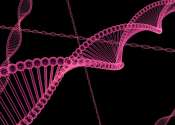Chemists make cellular forces visible at the molecular scale
Scientists have developed a new technique using tools made of luminescent DNA, lit up like fireflies, to visualize the mechanical forces of cells at the molecular level. Nature Methods published the work, led by chemists ...









